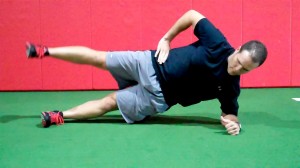I thought a fitting way to kick off the new year would be to share the top 10 things I learned or embraced that have most shpaed and impacted my training and rehab this past year. In no particular order I will rattle these things off. I hope at least one of these little pearls has a positive impact on your training and/or rehab as well.
- Often times it appears necessary to perform a biceps tenodesis or tenotomy in active adults undergoing a SLAP repair to ensure more predictable pain relief. I heard this at a sports medicine conference last May and I can tell you those patients having this done alongside their shoulder surgeries seem to recover quicker with less pain relief. With that said, keep in mind that SLAP tears are difficult to define and operate on as surgeons still do not have great agreement across the board on defining the extent of injuries and how to deal with them (operative vs. non-operative).
- Performance on the Functional Movement Screen (FMS) has little to no correlation with athletic performance. I screened an NBA player and an NFL player this year who both failed the screen. However, they obviously have mad athleticism and genetic ability. Keep in mind the FMS is a valuable tool used to assess movement and expose injury risk patterns based on the 7 tests.
- Soft tissue therapy is undervalued and misunderstood by most lay people. Assessing tissue restrictions and educating our clients to perform self myofascial release techniques is essential if they want to compete and remain healthy day in and day out. Specific problem areas I have increased my focus on this year have been the psoas, soleus and posterior rotator cuff/joint capsule. Click here for my soleus blog post.
- Core training is probably as much about not moving as it is about generating force with movement. I read work from Stuart McGill and other smart people in the field, and the concepts of anti-rotation and anti-extension are sound concepts to explore and look more closely at. Many times, performance in sport and life require us to resist movement and maintain position so strengthening the core to resist potentially harmful and stressful motions is and should be an important part of training and rehab programs. Understanding how to facilitate and activate core musculature in the training to protect the spine and improve mobility/strength is key. Click here for more on my core training.
- Hip dissociation is an important element to train as the lack of it can impact function and performance in a negative way. We assess it on the active SLR in FMS and I see the lack of it show up on clinical exams all the time. Whether it is HS tightness, hip flexor weakness or simply poor neuromuscular control, clients who are unable to effectively dissociate the hips are more prone to injury and limited performance.
- So many people with hip pain may be quietly suffering from femoroacetabular impingement (FAI). This is not just a middle age adult problem – it can severely impact young athletes as well. If you know of someone suffering chronic groin/hip pain that increases with running/athletic activity and has limited hip internal rotation, you should be suspicious of this. Check out my FAI blog post on this for more information.
- Sprinting and acceleration mechanics are wired in our brains. Teaching speed and acceleration is not as complicated as we make it at times. For many years, coaches have argued about whether to kill the false step. I have believed for about 3 years that it is indeed a natural movement for athletes. More and more research is beginning to confirm this. So, try not to overpower nature when you train the body – instead just focus on refining the inherent patterns we are born with.
- Platelet Rich Plasma (PRP) is still largely an unproven quantity with respect to better surgical outcomes. Recent research does not indicate it improves rotator cuff repairs a great deal (click here for more details). I like the science behind this but we need more research and info as we move ahead.
- Barefoot running is not for everyone! While I will be the first one to agree that our footwear may be over engineered at times, I do not think the plain answer is to lose the shoes altogether. Running on concrete surfaces for long distances on feet, arches or a body that is imbalanced and not suited for minimalist work is too big of a risk and an almost certain injury waiting to happen. Current research is promising that changing running form can reduce knee pain, we need to proceed cautiously with trying to wholly change form universally across the board in runners. I believe we must continue to look at clients as “individuals” to best assess their needs and prescribe appropriate training advice.
- Glute weakness/dysfunction seems to be at the forefront of several ailments in the lower extremity. For example, many times pain in the knee can be the direct result of weakness in the hip (or a combination of decreased hip mobility and strength). For a review of thew top 10 glute exercises, read my post on hip strengthening. The exercise below is the #1 exercise for strengthening the gluteus medius and should be a staple in your programs:

So, there you have it. These topics have permeated my writing, discussion and professional work in 2011. As I look ahead to 2102, I look forward to embracing new professional challenges such as obtaining my OCS certification, teaching Redcord courses and launching a new site dedicated to running fitness. I want to wish all my readers a Happy New Year and extend warm wishes for a prosperous 2012!

